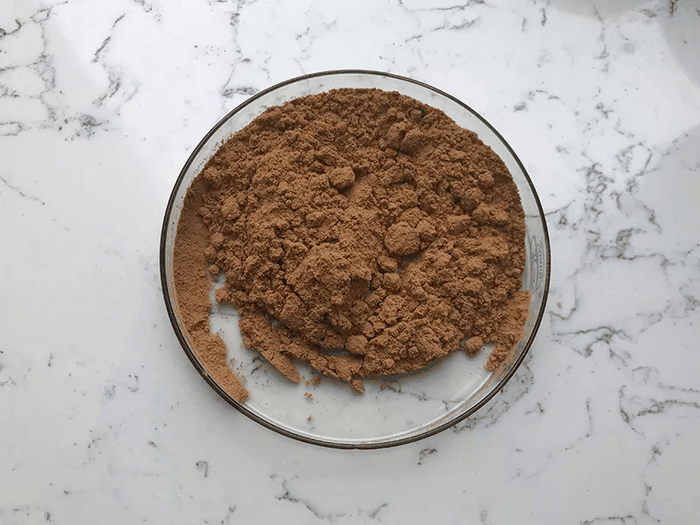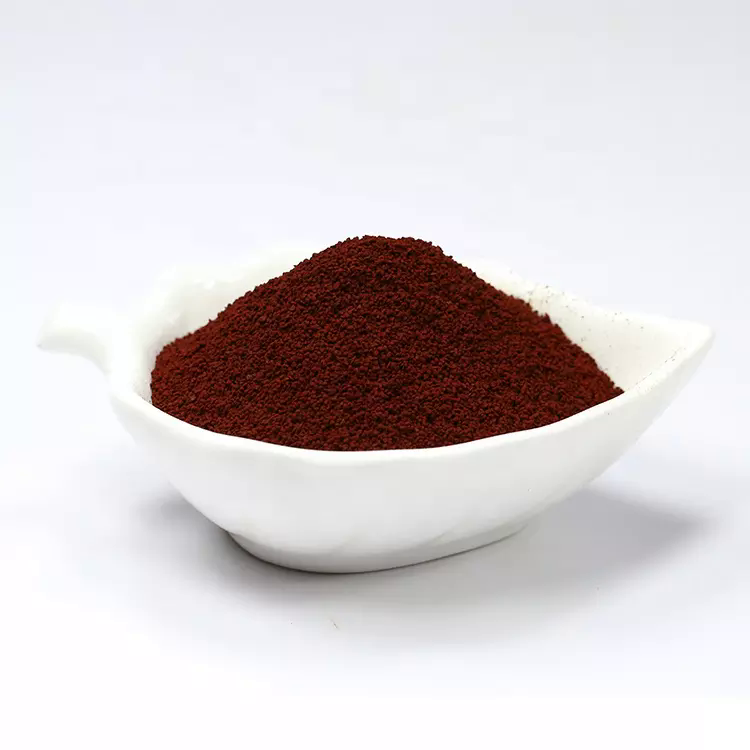Zinc acetate
Synonym(s):Zinc acetate dihydrate;Zn(OAc)2
- CAS NO.:557-34-6
- Empirical Formula: C4H6O4Zn
- Molecular Weight: 183.48
- MDL number: MFCD00012454
- EINECS: 209-170-2
- SAFETY DATA SHEET (SDS)
- Update Date: 2025-12-17 09:50:06

What is Zinc acetate?
Absorption
Zinc is absorbed in the small intestine by a carrier-mediated mechanism . Under regular physiologic conditions, transport processes of uptake do not saturate. The exact amount of zinc absorbed is difficult to determine because zinc is secreted into the gut. Zinc administered in aqueous solutions to fasting subjects is absorbed quite efficiently (at a rate of 60-70%), however, absorption from solid diets is less efficient and varies greatly, dependent on zinc content and diet composition .
Generally, 33% is considered to be the average zinc absorption in humans . More recent studies have determined different absorption rates for various populations based on their type of diet and phytate to zinc molar ratio. Zinc absorption is concentration-dependent and increases linearly with dietary zinc up to a maximum rate .
Additionally zinc status may influence zinc absorption. Zinc-deprived humans absorb this element with increased efficiency, whereas humans on a high-zinc diet show a reduced efficiency of absorption .
Toxicity
According to the Toxnet database of the U.S. National Library of Medicine, the oral LD50 for zinc is close to 3 g/kg body weight, more than 10-fold higher than cadmium and 50-fold higher than mercury .
The LD50 values of several zinc compounds (ranging from 186 to 623 mg zinc/kg/day) have been measured in rats and mice .
Indications
Zinc can be used for the treatment and prevention of zinc deficiency/its consequences, including stunted growth and acute diarrhea in children, and slowed wound healing. It is also utilized for boosting the immune system, treating the common cold and recurrent ear infections, as well as preventing lower respiratory tract infections .
Pharmacokinetics
Zinc is involved in various aspects of cellular metabolism. It has been estimated that approximately 10% of human proteins may bind zinc, in addition to hundreds of proteins that transport and traffic zinc. It is required for the catalytic activity of more than 200 enzymes, and it plays a role in immune function wound healing, protein synthesis, DNA synthesis, and cell division. Zinc is an essential element for a proper sense of taste and smell and supports normal growth and development during pregnancy, childhood, and adolescence. It is thought to have antioxidant properties, which may be protective against accelerated aging and helps to speed up the healing process after an injury; however, studies differ as to its effectiveness. Zinc ions are effective antimicrobial agents even if administered in low concentrations .
Studies on oral zinc for specific conditions shows the following evidence in various conditions :
Colds: Evidence suggests that if zinc lozenges or syrup are taken within 24 hours after cold symptoms start, the supplement may shorten the length of colds. The use intranasal zinc has been associated with the loss of the sense of smell, in some cases long-term or permanently .
Wound healing: Patients with skin ulcers and decreased levels of zinc may benefit from oral zinc supplements .
Diahrrea: Oral zinc supplements can reduce the symptoms of diarrhea in children with low levels of zinc, especially in cases of malnutrition .
Description
Zinc Acetate is a moderately water soluble crystalline Zinc source that decomposes to Zinc oxide on heating.
Metabolism
Zinc is released from food as free ions during its digestion. These freed ions may then combine with endogenously secreted ligands before their transport into the enterocytes in the duodenum and jejunum. . Selected transport proteins may facilitate the passage of zinc across the cell membrane into the hepatic circulation. With high intake, zinc may also be absorbed through a passive paracellular route .
The portal system carries absorbed zinc directly into the hepatic circulation, and then it is released into systemic circulation for delivery to various tissues. Although, serum zinc represents only 0.1% of the whole body zinc, the circulating zinc turns over rapidly to meet tissue needs .
Properties of Zinc acetate
| Melting point: | 83-86 °C |
| Boiling point: | 908°C |
| Density | 1.84 g/mL at 25 °C (lit.) |
| vapor pressure | 0.001Pa at 25℃ |
| Flash point: | 12 °C |
| storage temp. | Inert atmosphere,Room Temperature |
| solubility | Methanol (Slightly), Water (Slightly) |
| pka | 4.756[at 20 ℃] |
| form | Powder |
| color | Yellow to brown to gray-green |
| Specific Gravity | 1.84 |
| Water Solubility | Soluble in water, alcohol, dilute mineral acids and alkalies. |
| Sensitive | Hygroscopic |
| Merck | 14,10128 |
| CAS DataBase Reference | 557-34-6(CAS DataBase Reference) |
| NIST Chemistry Reference | Zinc acetate(557-34-6) |
| EPA Substance Registry System | Zinc acetate (557-34-6) |
Safety information for Zinc acetate
| Signal word | Danger |
| Pictogram(s) |
 Corrosion Corrosives GHS05  Exclamation Mark Irritant GHS07  Environment GHS09 |
| GHS Hazard Statements |
H302:Acute toxicity,oral H318:Serious eye damage/eye irritation H411:Hazardous to the aquatic environment, long-term hazard |
| Precautionary Statement Codes |
P264:Wash hands thoroughly after handling. P264:Wash skin thouroughly after handling. P270:Do not eat, drink or smoke when using this product. P273:Avoid release to the environment. P280:Wear protective gloves/protective clothing/eye protection/face protection. P301+P312:IF SWALLOWED: call a POISON CENTER or doctor/physician IF you feel unwell. P305+P351+P338:IF IN EYES: Rinse cautiously with water for several minutes. Remove contact lenses, if present and easy to do. Continuerinsing. |
Computed Descriptors for Zinc acetate
| InChIKey | DJWUNCQRNNEAKC-UHFFFAOYSA-L |
Zinc acetate manufacturer
New Alliance Fine Chem Private Limited
Vasa Pharmachem Pvt Ltd. (VPPL)
New Products
4,4-Difluoropiperidine hydrochloride tert-butyl 9-methoxy-3-azaspiro[5.5]undecane-3-carboxylate Indole Methyl Resin N-Isopropylurea N,N-Dicyclohexylcarbodiimide(DCC) MELDRUMS ACID 5-METHYLISOXAZOLE-4-CARBOXYLIC ACID Magnessium Bis glycinate Zinc ascorbate 1-bromo-2-butyne 2-acetamidophenol 9(10H)-anthracenone Erythrosin B, 4-Piperidinopiperidine 2-((4-morpholinophenylamino) (methylthio) methylene) malononitrile 2,4-dihydroxybenzaldehyde 3-(4-morpholinophenylamino)-5-amino-1H-pyrazole-4-carbonitrile Methyl 2-methylquinoline-6-carboxylate 2,6-dichloro-4-nitropyridine 4-Bromo-2-chlorobenzonitrile 2-(benzylamino)acetic acid hydrochloride 4-(tert-Butoxycarbonylamino)but- 2-ynoic acid 3,4-dihydro-2H-benzo[b][1,4]dioxepine 1-Phenyl-1-cycloprppanecarboxylicacidRelated products of tetrahydrofuran








You may like
-
 ZINC ACETATE 99%View Details
ZINC ACETATE 99%View Details -
 Zinc acetate 99%View Details
Zinc acetate 99%View Details -
 Zinc acetate 98%View Details
Zinc acetate 98%View Details -
 Zinc acetate 99%View Details
Zinc acetate 99%View Details -
 Zinc Acetate 99%View Details
Zinc Acetate 99%View Details -
 Zinc acetate CAS 557-34-6View Details
Zinc acetate CAS 557-34-6View Details
557-34-6 -
 Zinc acetate CAS 557-34-6View Details
Zinc acetate CAS 557-34-6View Details
557-34-6 -
 Zinc Acetate, Packaging Type: 25 KG Hdpe BagsView Details
Zinc Acetate, Packaging Type: 25 KG Hdpe BagsView Details
557-34-6
